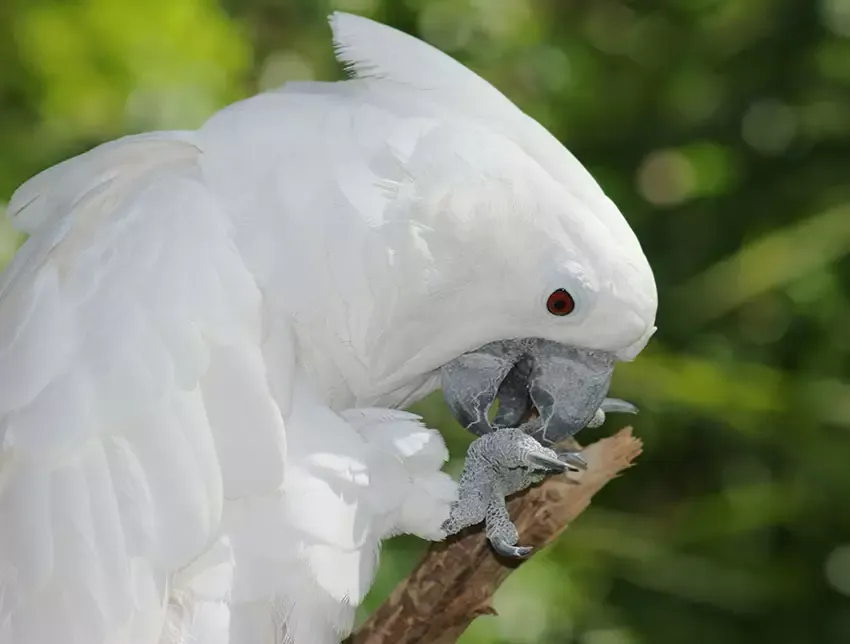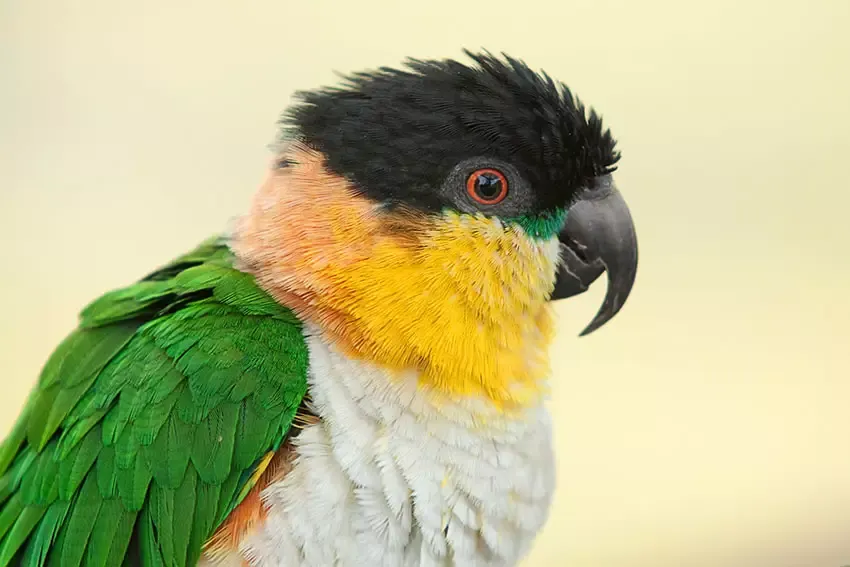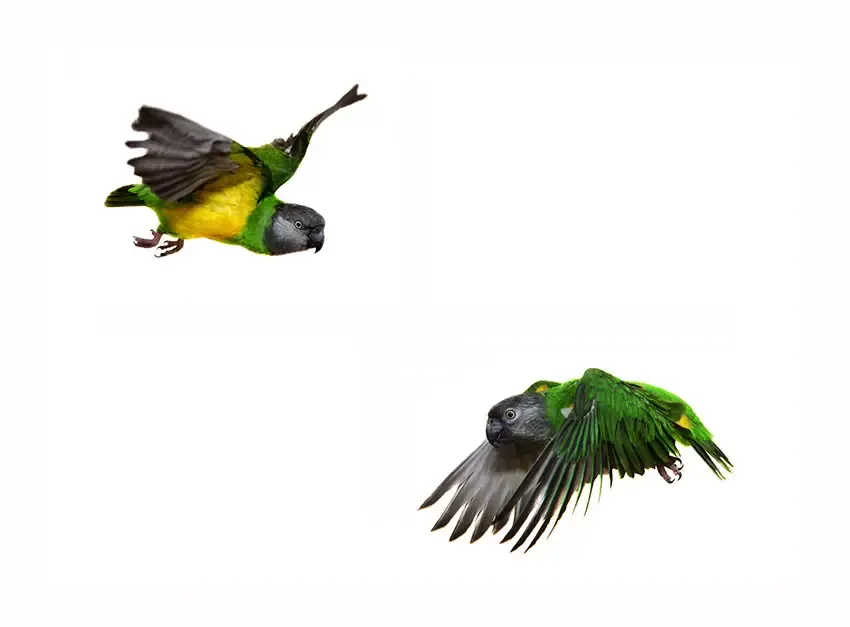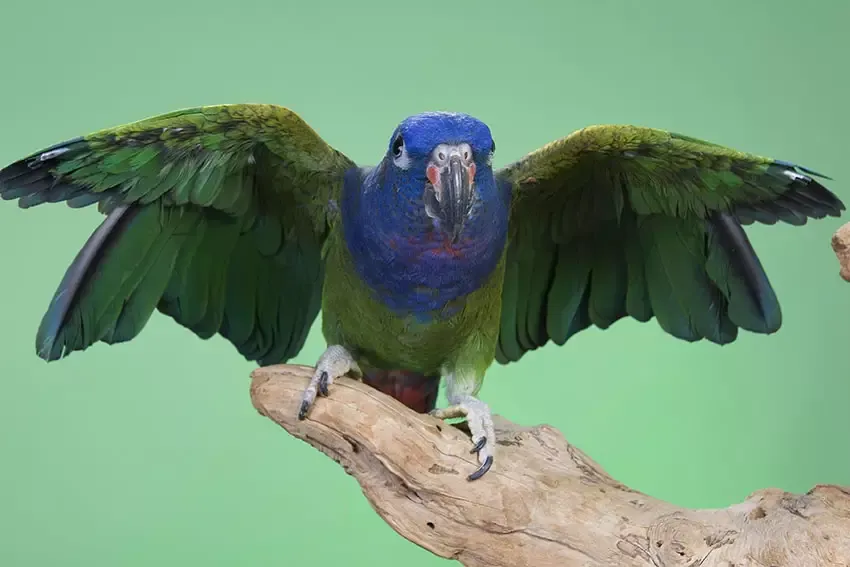Many behaviors in pet birds, such as feeding, flying, or bathing, are straightforward to interpret. However, parrot body language often involves subtle movements that reveal their emotions, needs, and intentions. Learning to read these signals is crucial for parrot owners to build stronger bonds, prevent misunderstandings, and ensure their birds’ well-being. Whether you have an African Grey, Amazon, or Cockatoo, decoding parrot body language can help you respond appropriately to signs of happiness, stress, or affection.
Understanding these cues draws from veterinary insights and experienced avian keepers. For instance, organizations like the Association of Avian Veterinarians emphasize observing body postures to detect health issues early. In this guide, we’ll break down key aspects of parrot body language, from beak actions to wing movements, helping you become a more attuned owner.
Beaks in Parrot Body Language
Parrots use their beaks for more than just eating—they’re key communicators. Grinding or clicking sounds often accompany beak movements, signaling contentment or warning (detailed in parrot sound guides). Jousting, where birds gently grab each other’s beaks, is playful wrestling without aggression; true fights involve louder squawking and flapping.
Wiping the beak after meals, especially messy ones like bananas, is normal hygiene. Some parrots also wipe to mark territory.
 Blue-fronted Amazon beak
Blue-fronted Amazon beak
This expressive feature, as seen in Blue-fronted Amazons, highlights how beaks convey mood through subtle actions.
Biting: A Defensive Signal
Biting in parrot body language indicates aggression, fear, or overprotectiveness—never ignore it. Watch for precursors like crouching and beak-opening before a lunge. Habituate your bird to your presence gradually to reduce this. In aviaries, overcrowding can trigger bites; isolate persistent biters until they calm.
Veterinarians recommend environmental enrichment, like larger cages or toys, to minimize stress-related biting. Patience and positive reinforcement are key to reforming this behavior.
Chewing: A Natural Instinct
Chewing is a healthy outlet for parrots, akin to how rodents gnaw. Provide safe, non-toxic toys like untreated wood or cardboard egg cartons to satisfy this urge. Neglecting it can lead to destructive habits targeting furniture.
 White cockatoo feeding
White cockatoo feeding
White Cockatoos, with their distinctive crests, often chew during feeding routines, blending instinct with play.
Crests: Mood Indicators in Crested Species
Cockatiels and Cockatoos raise crests to express emotions. A flat or slightly raised crest means relaxation; full erection signals excitement, like greeting you or eyeing food. Crouched with a raised crest and hissing? That’s fear or anger—proceed cautiously.
Distinguish excitement from overstimulation; the latter may precede pecks. Observing crest positions daily helps track your parrot’s emotional state.
 Black-headed caique
Black-headed caique
Black-headed Caiques ruffle feathers alongside crest changes, amplifying their expressive displays.
Ruffled Feathers and Preening
Ruffling feathers aids preening, shaking off dust and realigning plumage. It’s common post-bickering or baths. Persistent fluffing suggests cold, illness, or discomfort—consult a vet promptly, as avian experts note this as an early illness sign.
Hanging Upside Down: Pure Joy
Not all parrots do this, but those who hang upside down are typically blissful and playful. It’s harmless and shows trust in their environment.
 Double-yellow-headed Amazon
Double-yellow-headed Amazon
Double Yellow-headed Amazons often show off dramatically, incorporating such antics into their repertoire.
Head Movements Explained
Head bobbing seeks attention or mimics courtship, common in singles. African Greys frequently shake heads harmlessly, but boredom can exacerbate it—rotate toys and increase interaction. For more on African grey parrot screaming, which pairs with head actions, check related behaviors.
Legs and Feet Signals
A raised leg with clenched claws is restful, conserving heat or just lounging. Tapping feet claims territory, especially in Cockatoos. “Collapsing” legs during handling? Your parrot is stalling for more out-of-cage time—gently return them to reset the habit.
 Yellow-crowned Amazon
Yellow-crowned Amazon
Yellow-crowned Amazons use feet like hands, underscoring their dexterity in parrot body language.
Regurgitating: Affection or Bonding?
Regurgitation—ejecting food—is natural for feeding young or mates. If directed at you with eye-pinning, bobbing, and stretching, it’s bonding affection. Discourage by ignoring calmly. This ties into broader mating cues; explore lovebird mating behavior for similar avian signals.
Scratching and Foraging
Head scratches reach beak-blind spots; ground scratching mimics foraging, popular in African Greys.
 Grey parrot preening wing
Grey parrot preening wing
African Greys scratch actively, blending grooming with natural instincts.
Tail Positions and Meanings
Tail wagging signals happiness or pre-pooping—useful for house-training. Flipping shows delight; gentle bobbing with panting follows exercise, but without? Vet check needed. Fanning indicates aggression or dominance.
For territorial displays, see social behaviour of birds.
Wings: Communication Tools
Drooping wings post-bath dry feathers; otherwise, signal fatigue or illness. Flapping without flight exercises, demands attention, or expresses joy. Lifting cools or stretches; ruffling readjusts post-flight or shows agitation.
 Senegal parrot flying
Senegal parrot flying
Senegal Parrots flap dynamically, a staple of wing-based parrot body language.
Wing Clipping Considerations
Clipping primary feathers grounds flight slightly for safety, preventing injuries in conflicts or escapes. Never clip fledglings before flight mastery. Professional vets ensure balance; botched clips cause imbalance or plucking.
 blue-headed-parrot-wings
blue-headed-parrot-wings
Properly clipped Blue-headed Parrot wings maintain mobility without full flight risks.
In mating contexts, like pursuits, clipping aids harmony—similar to male lovebird mating behavior.
Mastering parrot body language fosters trust and health. Watch daily for changes, enrich environments, and consult avian vets for concerns. Your attuned care prevents issues and deepens companionship. Explore more on scarlet macaw behavior for species-specific tips.
References
- Association of Avian Veterinarians (aav.org)
- Omlet Bird Guides (omlet.com)
- LafeberVet: Avian Behavior Insights (lafeber.com/vet)
